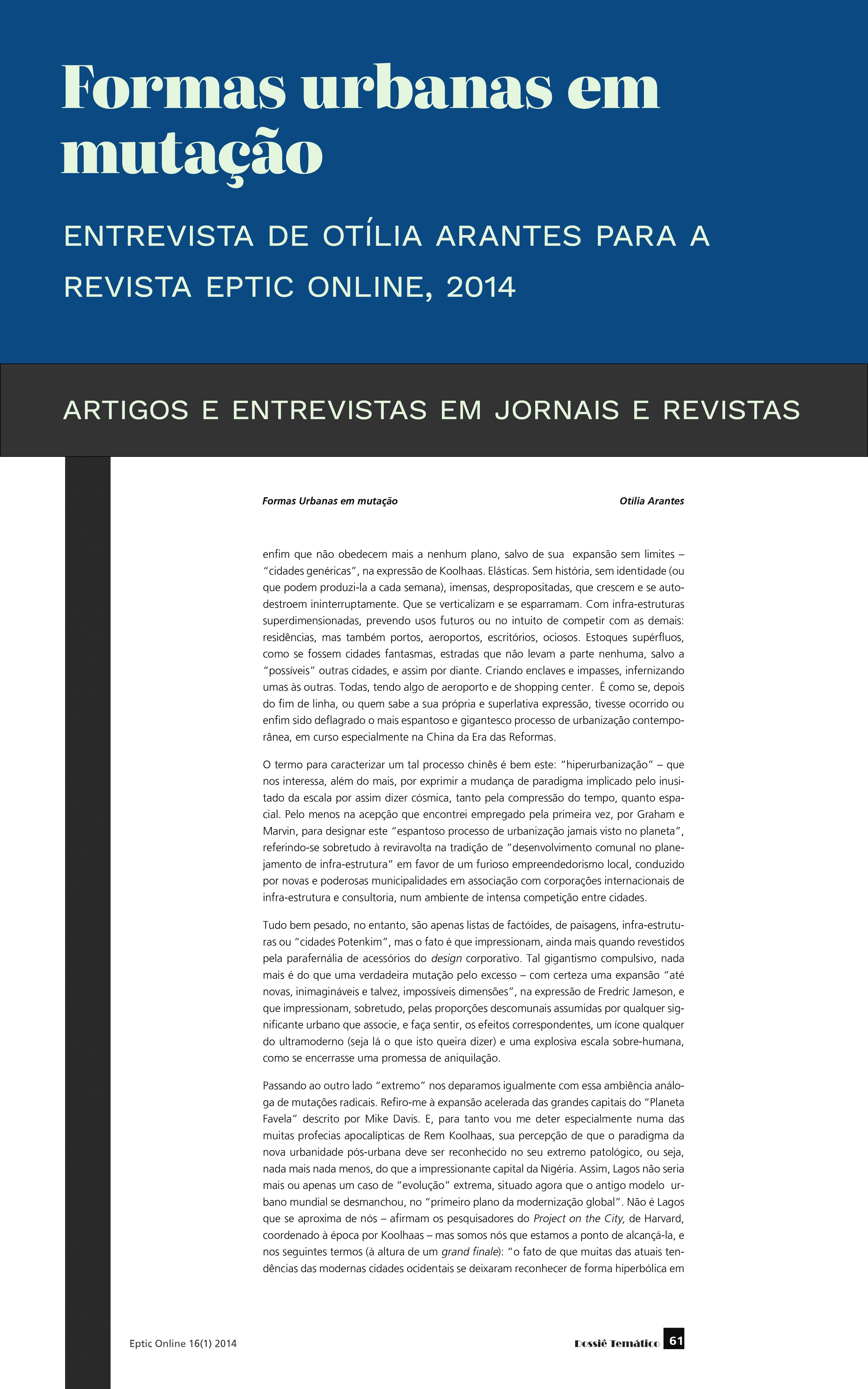Mutating urban forms
Interview to Eptic Journal
2014
Synopsis
In this interview given to Vera Pallamin (School of Architecture and Urbanism, University of São Paulo) as part of the thematic portfolio named “Produção e midiatização do espaço urbano no capitalismo contemporâneo” (Production and mediatization of the urban space in contemporary capitalism) created by Revista Eletrônica Internacional de Economia Política da Informação, da Comunicação e da Cultura (Eptic Journal, Jan-April 2014), Otília Arantes talks about the transformations that have been taking place in the shapes and appropriations of city spaces, especially in large urban centers—transformations to which old concepts like “public space” no longer apply, in an era of “extreme urban forms”. According to Arantes, this new urbanism is actually an anti-urbanism, or something beyond urbanism: a collapse of urbanity spreading through cities that no longer obey any plan except for limitless expansion, megalopolises that are continuously growing and self-destructing—the main examples being the big Chinese cities (studied by the author in the book Chai-na, EDUSP, 2011) and the big agglomerations of the “planet of slums” (as put by M. Davis), that is, from the compulsive gigantism of the eastern factoid cities to their pathological extremes, like the capital of Nigeria. Extreme urban forms that not only (obviously) designate their physical-spatial compositions and architectural contrasts, but also their abysmal social differences. We can say, therefore, that there is a convergence between the origins of the hyper-space of extreme urban forms and the geography of a “new war” of cities that are literally “besieged”.
In the second part of the interview, the topic proposed by Vera Pallamin is the political economy of culture, when the city culturalization that took place from the mid-twentieth century on not only turned culture into a central element in the configuration of social phenomena, but also converted the accumulation driven by capital-information, in an economy-politics of reproduction, into a cultural economy. When answering the question about the role of the architect in that context, Arantes returns to her arguments about the role of ostentatious architecture, especially cultural facilities, in the new strategies for the “requalification” of urban spaces in an image-centric era. (Please refer to Culture, Power and Money in City Management on this platform to read three texts from the 1990s.)
Keywords: Urban space, public space, extreme urban forms, megalopolis, Chinese cities, Lagos, Warfare State, Mike Davis, Koolhaas, Jameson, cultural economy, enterprise zones, collage city, Olympics, cultural facilities.

Downloads
Categories
License

This work is licensed under a Creative Commons Attribution-NonCommercial-NoDerivatives 4.0 International License.


